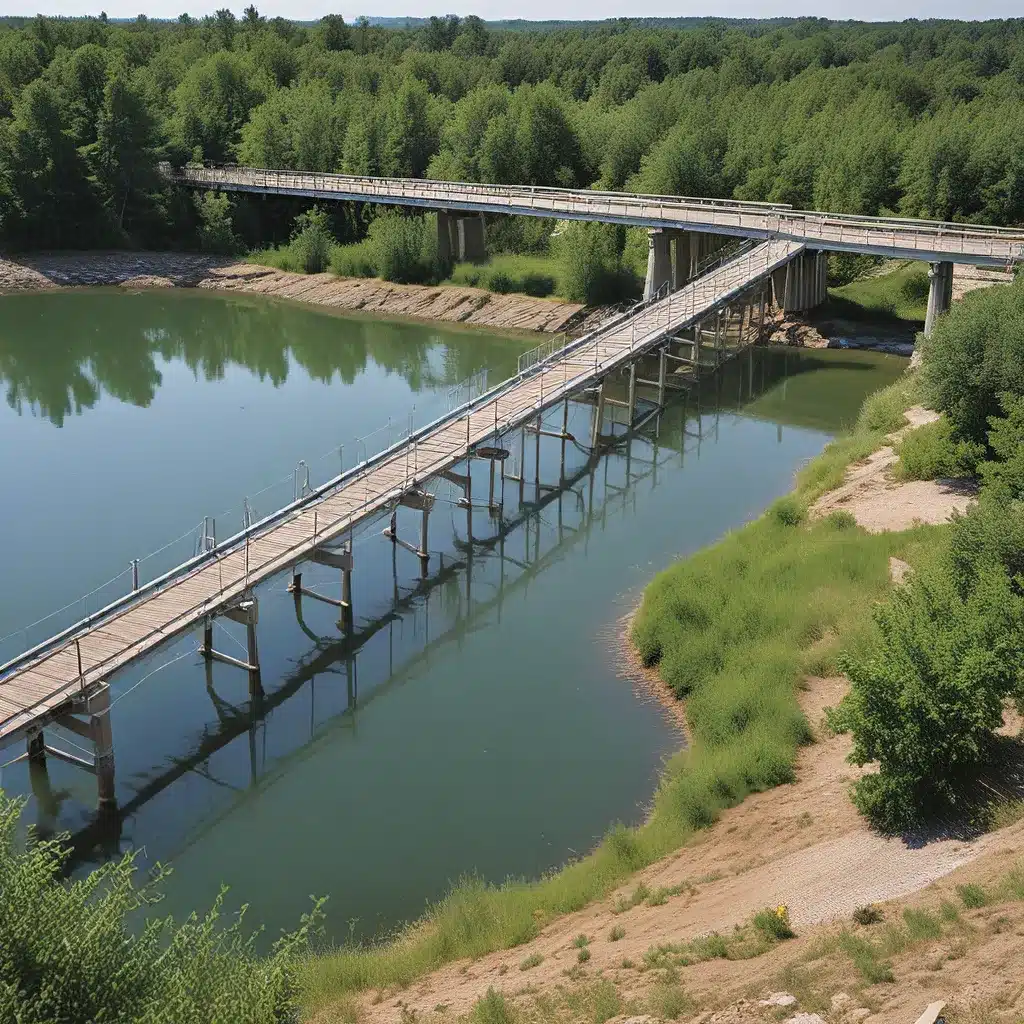
Wading into the Murky Waters of Sustainability
As I delve into the world of water treatment and environmental stewardship, I can’t help but feel a sense of both excitement and trepidation. On one hand, the advancements in water technology and the growing emphasis on sustainability are truly remarkable. But on the other, the sheer complexity of the challenges we face can be downright daunting.
It’s like navigating a labyrinth – every turn, every decision, has the potential to either propel us forward or send us spiraling back to square one. But as they say, with great challenge comes great opportunity. And that’s precisely what I’m here to explore today.
Uncovering the Symbiosis between Water and the Environment
Let’s start by acknowledging the elephant in the room – the often-overlooked connection between water treatment and environmental stewardship. These two domains, once thought to operate in silos, are now inextricably linked, each one relying on the other to thrive.
As the Adtalem Sustainability Report highlights, the water industry is at the forefront of ensuring sustainable water supply, cutting-edge treatment technologies, and environmental stewardship. It’s a delicate balancing act, where the decisions we make today can have far-reaching consequences for generations to come.
Empowering the Next Generation of Water Custodians
But the good news is, there’s a growing movement of individuals and organizations dedicated to bridging this gap. Take, for instance, the Aquacademy initiative developed by the Valley County Water District. This community-based program is designed to provide water education programs to adults and children, with the goal of instilling water-wise habits and fostering a proactive community, ready to safeguard our most precious resource – water.
The Aquacademy Scholarship Program is particularly noteworthy, as it not only offers financial support for higher education but also provides a platform for the youth to engage with water sustainability issues. It’s a testament to the water industry’s commitment to nurturing the next generation of water professionals and environmental stewards.
Cultivating a Water-Wise Mindset
But the work doesn’t stop there. Organizations like the Public Water Agencies Group (PWAG) Conservation and Education Team (CET) are also making strides in raising awareness among the general public and students about the value and importance of water. Through initiatives like the Scholar Dollar Program, they’re actively engaging the community and empowering the next generation to become champions of water conservation and environmental protection.
And it’s not just about the big institutions – individual schools and teachers are also getting in on the action. The Mini Solar-Powered Boat project, for instance, is a hands-on initiative designed for 5th-grade classrooms to raise awareness about the stewardship of natural resources. It’s these grassroots efforts that truly have the power to inspire and catalyze change.
Embracing the Ripple Effect of Sustainable Practices
As I delve deeper into this topic, I can’t help but be struck by the ripple effect of sustainable water practices. According to the study, the benefits of effective water management extend far beyond the immediate gains. From enhanced ecosystem health to improved community resilience, the positive impact of these efforts is far-reaching and long-lasting.
It’s like throwing a pebble into a pond – the initial splash is just the beginning, as the waves continue to propagate, touching every corner of the water’s surface. And that’s precisely what we’re witnessing in the realm of water treatment and environmental stewardship.
Fostering Collaboration and Cross-pollination of Ideas
But the real key to success, I’ve come to realize, lies in the ability to foster collaboration and cross-pollination of ideas. It’s not enough to have isolated pockets of excellence – we need to create a seamless network of communication and knowledge-sharing, where the lessons learned in one community can be readily applied and adapted in another.
This is where websites like Inland Waters Inc. play a crucial role. By providing a centralized hub for information, resources, and best practices, they’re helping to bridge the gap between water treatment and environmental stewardship, empowering professionals and communities alike to work towards a more sustainable future.
Embracing the Complexity and Uncertainty
Of course, this journey is not without its challenges. The issues we’re grappling with are inherently complex, with multiple stakeholders, competing priorities, and a constantly evolving landscape of scientific research and technological advancements. As I delve into the subject, I’m struck by the sheer amount of uncertainty and nuance that comes with it.
But instead of shying away from this complexity, I believe we need to embrace it. We must be willing to explore different perspectives, engage in thoughtful debate, and acknowledge the limitations of our current knowledge. Only then can we truly make informed decisions and drive meaningful change.
Navigating the Path Forward
So, as I wade through the murky waters of water treatment and environmental stewardship, I’m filled with a sense of both trepidation and hope. The challenges before us are daunting, but the potential for positive impact is truly staggering.
It’s like navigating a treacherous river, where the currents are strong and the rapids unpredictable. But with the right tools, the right team, and the unwavering determination to succeed, I believe we can not only navigate these treacherous waters but emerge on the other side, stronger and more resilient than ever before.
And that, my friends, is the ultimate goal – to bridge the gap between water treatment and environmental stewardship, creating a future where our most precious resource is cherished, protected, and sustainably managed for generations to come.


